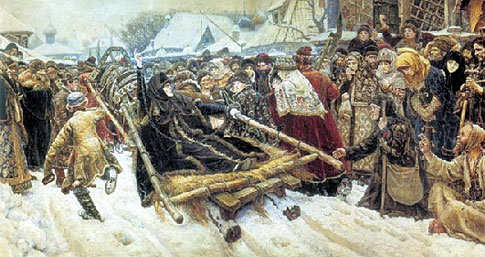Honore Fragonard – “Solar Brush Provence”
 Attraction to the poetry of life, its emotional richness distinguishes Fragonard among the brilliant artists of France of the XVIII century.
Attraction to the poetry of life, its emotional richness distinguishes Fragonard among the brilliant artists of France of the XVIII century.
The destiny of the master initially developed happily. Even in his youth, he quickly and easily achieved success, was recognized by the Academy. Then – the rejection of the paths of a successful artist. But independence did not bring him worldly well-being. In the last years of his life, Fragonard loses his customers, almost forgotten by the public.
His characters are captivating cowgirls and elegant cavaliers, people of art, inhabitants of poor huts. Any thing is inherent in a special, fragonar delight of life. The master’s work as if complements the legacy of his two great compatriots of the 18th century – Watteau and Chardin. Fragonard added the sharpness of instantaneous perception to the deep, sometimes philosophical comprehension of the world, to the severity and melancholicity of their images – the Provençal vitality that beats over the edge. There was no genre – except perhaps a still life – in which the painter did not work. Who knows if the master has not materialized his own personality traits in the collective “Portrait of the Artist”, performed in 1765–1772? So – an optimist, a brilliant improviser – completely immersed in creativity – he entered the minds of his contemporaries.
Honore Fragonard was born in 1732 in the south of France, in Provence, in Grasse, a small town with picturesque streets. His father made gloves. There was no luck in business, trade went badly. Having gone broke, the family moves to Paris. Young Honore arranged as a clerk to the notary. But he works there reluctantly – drawing draws him. When, with the consent of his father, he begins to engage in painting, the cherished desire is fulfilled. Honore enters the workshop of the famous F. Bush, but the maestro sends the young man to J.-V. Chardin. Here began the introduction to the basics of painterly craft. In the workshop of Chardin, Fragonard spent only about six months. Acquiring the first skills, he returns to Bush – the master, who was more in tune with the warehouse of his talent.
An inventive and virtuoso artist, Bush was popular with his contemporaries. His idyllic plots and decorative color found an echo in the early pastoral student. Fragonard depicts a gardener and a gardener engaged in a blind man’s buff (a game of man in the blind man’s back), then a captivating village with a baby (Joy of motherhood), or a graceful beauty with a shepherd in love (Cage).
In 1752, the twenty-year-old painter participates in an academic competition for the Rome Prize. His work was awarded an award, and he received the right to stay in Italy. However, the trip was preceded by diligent study in Paris. Fragonard studies anatomy, perspective, geometry, history, draws casts and living nature, visits the Louvre, the royal palaces, where he studies the paintings of old masters. Finally, in 1756, a young artist left for Italy.
The fascinating world of ancient images, works of Michelangelo, Raphael and Tiepolo struck Fragonard’s imagination. His diaries of that time are preserved. Here, in Italy, there is the birth of a new painter – an original, independent, whose work includes genuine poetry.
He creates a series of majestic landscapes. These are parks, alleys of the Villa d’Este in Tivoli, the famous Italian palaces, cypress trees stretching upwards, spreading pine trees, waterfalls and fountains. All the splendor of Italian nature, her romantic breath captured the drawings of Fragonard of that time.
The master mastered various graphic techniques in Italy. With the help of a pen and a pencil, a mascara, the name, a shining sun and dark silhouettes of trees fill the picture with the breath of life.
Fragonard is one of the largest French portrait painters of the 18th century. He wrote close friends, fellow painters, writers, theater actresses throughout life. But it would be in vain to look for his canvases of subtle psychologism, penetration of the shot of the human personality. On the contrary, they are decorative, attract the attention of the catchy beauty of tapestries or carpets, not without reason that most of them were intended to decorate aristocratic salons. The names of the portraits “Singing” (1709), “Love note” (1773–1776), “Little mischief” (1777–1779) – speak of a large proportion of allegorism. In fact, isn’t the charming blonde and a yellow-brown dress appear to be the patroness of vocal art, not the allegory of singing, not the royal and radiant goddess? L in the colorful orchestration of cloths Fragonard was an unsurpassed master. The colors of his portraits form “spicy”, refined harmonies, as in the “Little mischievous” canvas, where everything is from the theater, masquerade. Or they sound like wind instruments – loudly, invitingly.




